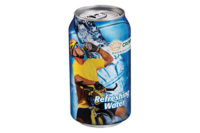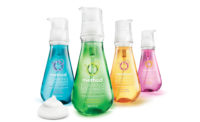F-F-S: A roundtable discussion

Reiser RE20 FFS machine
Industry experts provide insights into common problems and solutions, industry trends and enhancements for Form-Fill-Seal packaging.
Elisabeth Cuneo, Associate Editor
Contributors:
Bob Kelly, president, General Packaging
Mike McCann, packaging specialist, Reiser
Bob Williams, vice president, sales & marketing, Triangle Package Machinery
F&BP: What are the trends in F-F-S technology over the last 10 years?
Bob Kelly: We are seeing more products moving to flexible as part of the source reduction movement and to reduce costs. In particular, we are building more machines for packaging liquids.
Mike McCann: There is a tendency to make machines more and more complex, yet the basic needs of users have not changed: make them simple to use, simple to clean, and simple to maintain. If anything, users need simpler machines because they cannot afford downtime and they cannot easily find highly educated and experienced maintenance and operators.
Bob Williams: We’re really seeing better sealing technology, not only with traditional heat sealing methods, but with ultrasonic welding. We’re also seeing the need for faster changeover and reduced scheduled downtime, and also for improved sanitation. We’re seeing stricter sanitation requirements to combat food safety issues and cleaner equipment across the board.
F&BP: What are solutions for common problems customers have with F-F-S machinery?
McCann: It’s easy in a fast paced environment with orders waiting to be shipped to postpone training when a machine is first installed. In the same way that an ounce of prevention is worth a pound of cure, an hour of training is worth a day of low productivity. Invest training time when the machine first arrives.
Williams: Purchasing equipment that does not accurately meet their needs, either due to the durability of the equipment, incorrect speeds, or buying a machine that meets a price-point or delivery date, or is not designed for the application. Don’t purchase a high speed bagger just because it’s fast – not all high-speed machines are built for your environment and your product. Look for a bagger that is the right fit for the size and type of product you’re running, as well as the speed you need. It should be properly built for your application and be able to operate 24/7 with a minimum amount of vibration. If yours is a washdown environment, make sure the bagger is stainless steel or, in some cases, that it meets USDA and 3A sanitary standards.
As far as solutions, keep in mind that packaging equipment suppliers cannot be all things to all people. Every company has its own expertise. Be sure to look for a manufacturer that has a successful track record with your type of product, application, and operating environment.
F&BP: What is a popular upgrade or option that customers ask for?
Kelly: We upgrade machines in the field with new programmable logic controllers and other parts and completely rebuild them at our facility. The rebuilt machines are like new, but the cost is much lower than a new machine.
McCann: The ability to run semi-rigid and flexible materials on the same machine with minimal changeover time and multiple package styles like modified atmosphere packaging, vacuum and vacuum skin-pack.
Williams: Updating the electronics, or control box. Other upgrades include adding a reclosable feature or providing the ability to switch between different film structures (supported vs. non-supported film).
F&BP: What advice for end-users can you share?
McCann: Many customers are insisting on long-term versatility: web widths, package styles, etc. F-F-S machines require significant capital investments and cannot be thrown away if the customer’s market changes. If you want this benefit, then you must buy a machine that is fundamentally adaptable and modular in design. Make sure you understand in detail how it can be changed for future package possibilities. How does a customer best determine what vendor is telling the real truth regarding future versatility? Visit the supplier, speak with references, and look at the long term track record of what is claimed.
Williams: Start with a well-built machine. There’s no sense in upgrading a bagger that’s not durable enough to stand the test of time. Also, try to schedule the upgrade far enough in advance. The time to upgrade is not when a machine is falling apart, but when new technology is available that will benefit your application. Also, it’s important to engage the Original Equipment Manufacturer (OEM) when upgrading to make sure you’re getting the proper parts. Too often, problems can manifest themselves in the future when less-expensive non-OEM parts are used. Efficiency can drop gradually and you’ll find that you’re slowly losing money. Also, when you partner with the right OEM, you’ll have access to valuable service and support.
For More Information:
General Packaging 713-686-4331; www.generalpackaging.com
Reiser 781- 821-1290; www.reiser.com
Triangle Package Machinery Company 800-621-4170; www.trianglepackage.com

tna robag 3c with scale
What's new in F-F-S?
Ultrasonics. Ultrasonic sealing, an alternative to heat sealing, is a method for joining thermoplastic materials together by emitting acoustic vibrations. It offers 100% seal integrity, a huge benefit for companies with products that require air-tight packages.Triangle’s ultrasonic sealing technology offers a 50-80% narrower seal vs heat sealing, has sealing times between 80 and 200 ms, eliminates cooling time, and reduces or eliminates leakers.
Bosch’s ultrasonic sealing technology is capable of web material speeds used on vertical form, fill and seal machines. By removing the heating element, manufacturers can reduce the thickness of the sealant layer of packaging films, reducing material costs and enabling the packaging of temperature-sensitive foods.
Flexibility with bag sizes.
The tna robag® 3 ttx can produce any type of bag format including pillow pack, quattro or block bottom, and inner and outer bag configurations, with bag size options from 40mm to 320mm that can be easily changed, and wide range of bag formats.
The P3 from Kliklok-Woodman is capable of producing a wide range of bag sizes with consistent performance throughout the range, and offers a variety of bag style options, including block bottom bags, perforated bag string, promotional strip, notching and hole punching. Using fewer parts.
The servo-driven design of the tna robag 3 ttx has 30% less moving parts than a conventional VF-F-S machine, driving down repair and maintenance requirements.
Bosch
49 (0)711 811-0; www.boschpackaging.com
Kliklok-Woodman
770-981-5200; www.kliklok.com
tna
972-462-6500; www.tnasolutions.com
Looking for a reprint of this article?
From high-res PDFs to custom plaques, order your copy today!






